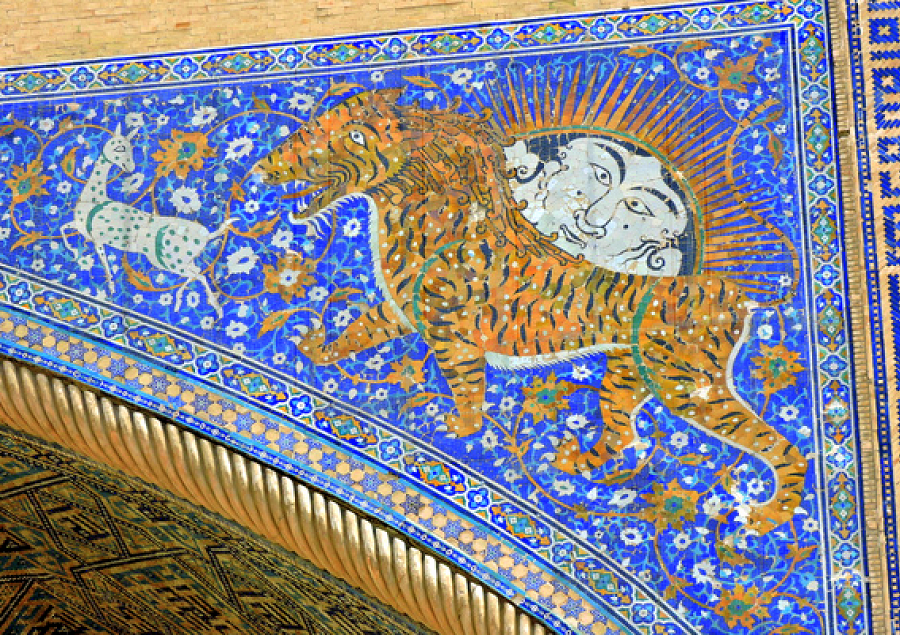THE TIGERS OF SAMARKAND
 The magnificent Sher-Dor Madrassa, built in the early 1600s, is part of the Registan public square complex of the ancient Silk Road oasis of Samarkand. “Sher-Dor” means “Adorned with Tigers” in Persian – flaunting Islamic blasphemy of living beings in art. Here is the mosaic depiction of a tiger chasing a deer and on its back a rising sun deity with a human face. This is honoring the pre-Islamic history of Samarkand that goes back almost 3,000 years.
The magnificent Sher-Dor Madrassa, built in the early 1600s, is part of the Registan public square complex of the ancient Silk Road oasis of Samarkand. “Sher-Dor” means “Adorned with Tigers” in Persian – flaunting Islamic blasphemy of living beings in art. Here is the mosaic depiction of a tiger chasing a deer and on its back a rising sun deity with a human face. This is honoring the pre-Islamic history of Samarkand that goes back almost 3,000 years.
It was centuries old when Alexander conquered it in 329 BC. For a thousand years as Central Asia’s great entrepot on the Silk Road between China and the Mediterranean, it was a cosmopolitan center for Hinduism, Buddhism, Judaism, Zoroastrianism, and Nestorian Christianity. Incorporated into the Islamic world in the 700s, sacked by Genghiz Khan in 1220, rebuilt by the time Marco Polo in 1272 described it as “a large and splendid city,” Tamerlane made it his capital in 1370.
Colonized by Czar Alexander II in the 1860s within the Russian Imperial Empire, and by the Soviets in the 1920s within the Uzbek SSR, Samarkand is flourishing today in independent Uzbekistan. Come with me to explore Samarkand and so many other wonders of The Heart of Central Asia this September. It will be like a dream come true. (Glimpses of Our Breathtaking World #208 photo ©Jack Wheeler)

